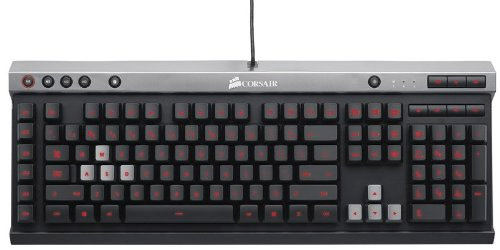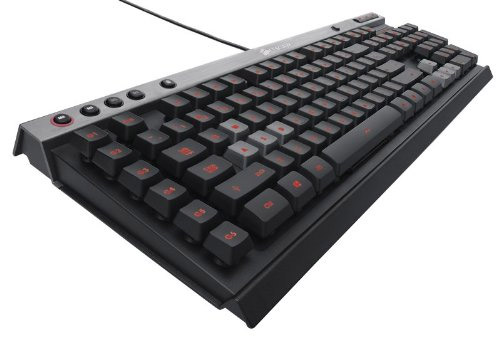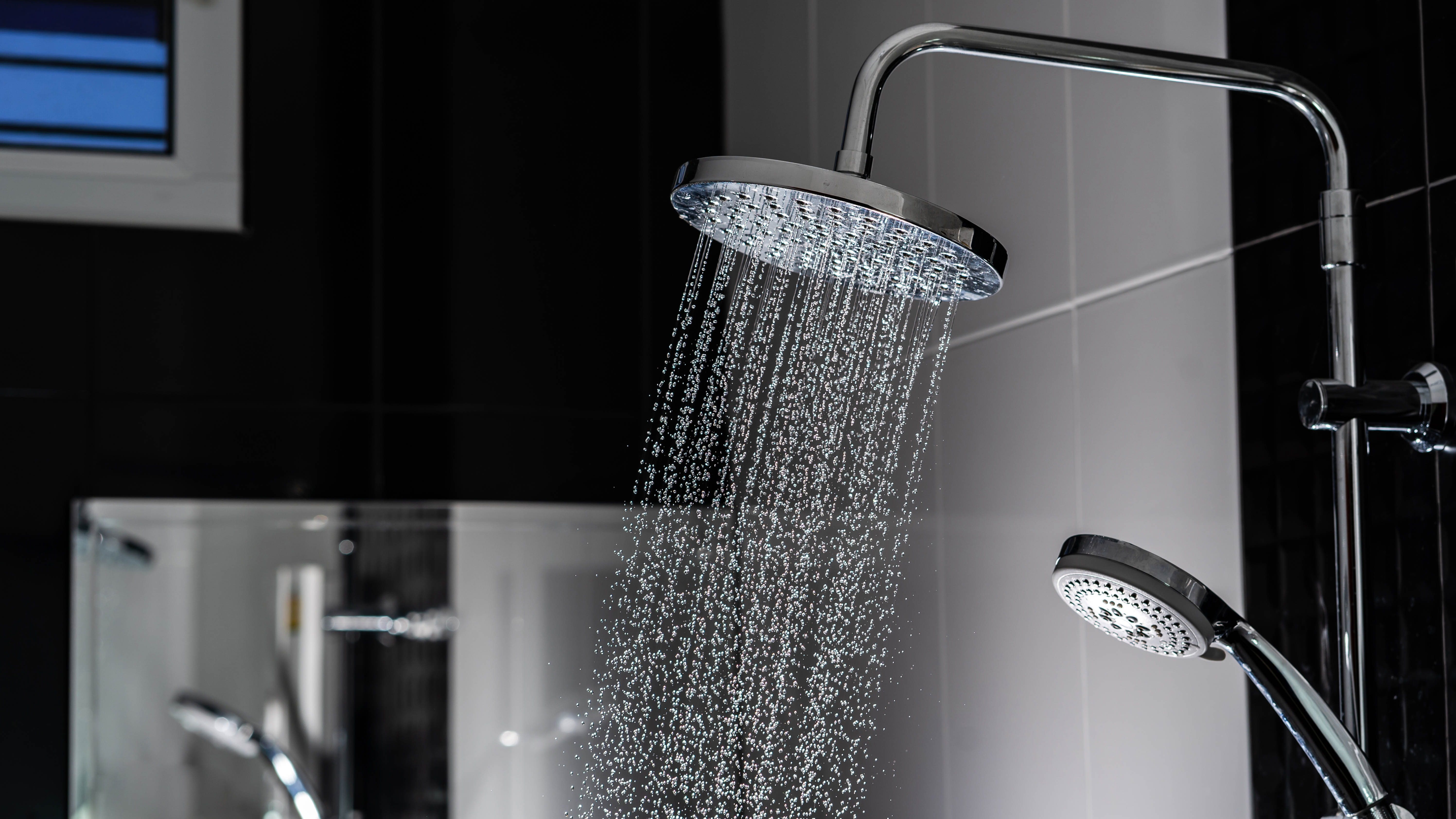Tom's Guide Verdict
The Raptor K40 is a decent keyboard with a cool lighting gimmick, but it's hard to think of any reason to spend $80 for it.
Pros
- +
Gorgeous lighting
- +
Intuitive, attractive design
- +
Good macro functionality
Cons
- -
Feels like a much cheaper keyboard
- -
No wrist rest
- -
Expensive for what it does
Why you can trust Tom's Guide
An attractive design can elevate an otherwise-excellent product, but it's seldom enough to save a good-enough peripheral from being damned with faint praise. Consider the Corsair Raptor K40 ($80) gaming keyboard. This device sports a sensible design, helpful software and useful features, but its primary selling point — colorful backlighting — is not quite enough to save it from being just another keyboard that's a little too expensive for what it does.
Design
The Raptor K40 is nothing remarkable in the size department, measuring in at 19.3 x 8.7 inches. This is slightly smaller than the comparable Razer Deathstalker (20.3 x 10.2 inches) and Logitech G105 (19.6 x 8.8 inches) keyboards. If your desk can fit a standard office keyboard, it can probably fit the Raptor K40.
The key layout resembles almost every other keyboard on the market, but those with wrist conditions should be aware that the keyboard does not come with a built-in wrist rest. This absence helps keep the keyboard compact, but means that the Raptor K40 is not as comfortable as it could be.
MORE: Best Gaming Keyboards
One of the Raptor K40's selling points is that it lets users choose between 16.8 million colors and three brightness settings for its backlighting. This is a nice touch, especially since you can set a different color for each of the three selectable profiles.
Many of the colors tend to look the same, though: You may have about 3 million shades of red to choose from, yet the gradations are often too subtle for the human eye, let alone a keyboard lighting system. The lighting is pretty, but if it's your primary reason for choosing the Raptor K40, it's an expensive selling point.
Keys
The Raptor K40 is a fairly standard rubber-dome-membrane keyboard, but it does have a few features the standard office model lacks. There's a column of six programmable macro buttons on the far left-hand side (I kept hitting G1 when I meant to hit Esc, but this seems to be a common problem with me), a macro-record button, three profile buttons and a gaming-mode button, which disables the Windows key during play sessions.

The keys feel smooth and easy to press, and I liked how the W, A, S, D and arrow keys are silver instead of black to help highlight them. In spite of the peripheral's smart design, however, it suffers from the same potentially fatal flaw as most other membrane gaming keyboards: the feel is not significantly different from the run-of-the-mill $20 keyboard I'm typing on right now. The keys feel responsive, springy, pleasant -- and almost exactly the same as just about every other rubber-dome keyboard I've ever used.
To be fair, while the Raptor K40 may not do much to improve your gaming skills, it's a typist's friend. Using the Ten Thumbs Typing Test, I scored 91 words per minute with a 0 percent error rate on the Raptor K40, versus 91 words per minute with a 2 percent error rate on a standard Dell keyboard. That's impressive, considering my familiarity with the Dell and my relative lack thereof with the Raptor K40.
Features
The Raptor K40 runs on Corsair's gaming software, which is thoroughly middle-of-the-road as these things go. You can use it to program macros, change the backlighting color and set up individualized profiles. You can make as many profiles as you like and switch between three of them on the fly by using the keyboard's M1, M2 and M3 buttons. This is a clean implementation of a useful feature, and more or less compensates for the fact that the software does not let you link profiles to individual games.

Recording macros is extremely simple, and I especially liked how Macro Record gets its own dedicated button rather than a difficult-to-reach button combination. Simply press Macro Record, select a macro key, record your sequence of keys and press the macro record button once again. You can record macros on the fly, program them in the software or combine the two approaches through macro editing.
The dedicated media control keys were also a nice touch. Users can play, pause, stop, skip and control volume on videos and music without having to use keyboard shortcuts. It's a small touch, but one that makes the Raptor K40 good for everyday use rather than gaming exclusively.
Performance
I used the Raptor K40 to play Titanfall, StarCraft II: Heart of the Swarm, Watch Dogs and Star Wars: The Old Republic. All of the games played very well, although I didn't feel as though it conferred any special advantage over a standard membrane model. Gunning down enemy pilots in Titanfall or evading the police in Watch Dogs was easy enough, but I didn't need to use any of the Raptor K40's special features.
Actuation and key travel are unusually high on the Raptor K40: 70 g and 4.45 mm, respectively. This means that the keys are somewhat harder to press than comparable keyboards, and there's a little more space between keys. These specs helped out while typing, but did not seem to make much of a difference during our game testing.
MORE: Best Gaming Mice
The macro features came in handy for The Old Republic — or rather, they would have had the game not been so draconian regarding macro software. The title tends to block any attempt at using macros — even ones that respect skill cooldown rather than trying to game the system.
Instead, I tried out the macros with World of Warcraft, where they worked well enough. By default, the software uses a 1-second delay between keystrokes rather than the meticulously timed delays I programmed myself, but this was easy enough to turn off. The only issue is that once you start a macro, there's no easy way to interrupt it if your needs change suddenly.
Bottom line
The Raptor K40 is a decent keyboard with a cool lighting gimmick. Beyond that, it's hard to think of a reason to spend $80 for it. If you absolutely must have a membrane gaming keyboard, the Raptor K40 is one of the better ones. Even so, you might be better off with a standard $20 keyboard or a $110 mechanical one.
Specs
Actuation: 70 g
Key Travel: 4.45 mm
In-Key Rollover: >10 keys
Size: 19.3 x 8.7 x 1.8 inches
Weight: 2.4 pounds
Marshall Honorof is a Staff Writer for Tom's Guide. Contact him at mhonorof@tomsguide.com. Follow him @marshallhonorof and on Google+. Follow us @tomsguide, on Facebook and on Google+.
Marshall Honorof is a senior editor for Tom's Guide, overseeing the site's coverage of gaming hardware and software. He comes from a science writing background, having studied paleomammalogy, biological anthropology, and the history of science and technology. After hours, you can find him practicing taekwondo or doing deep dives on classic sci-fi.
-
SchizoFrog I just think it is funny that at the time the article was published, the opening comment mentions it not being worth $80 while the advert on the left advertises it on Amazon for $59.99. :)Reply


